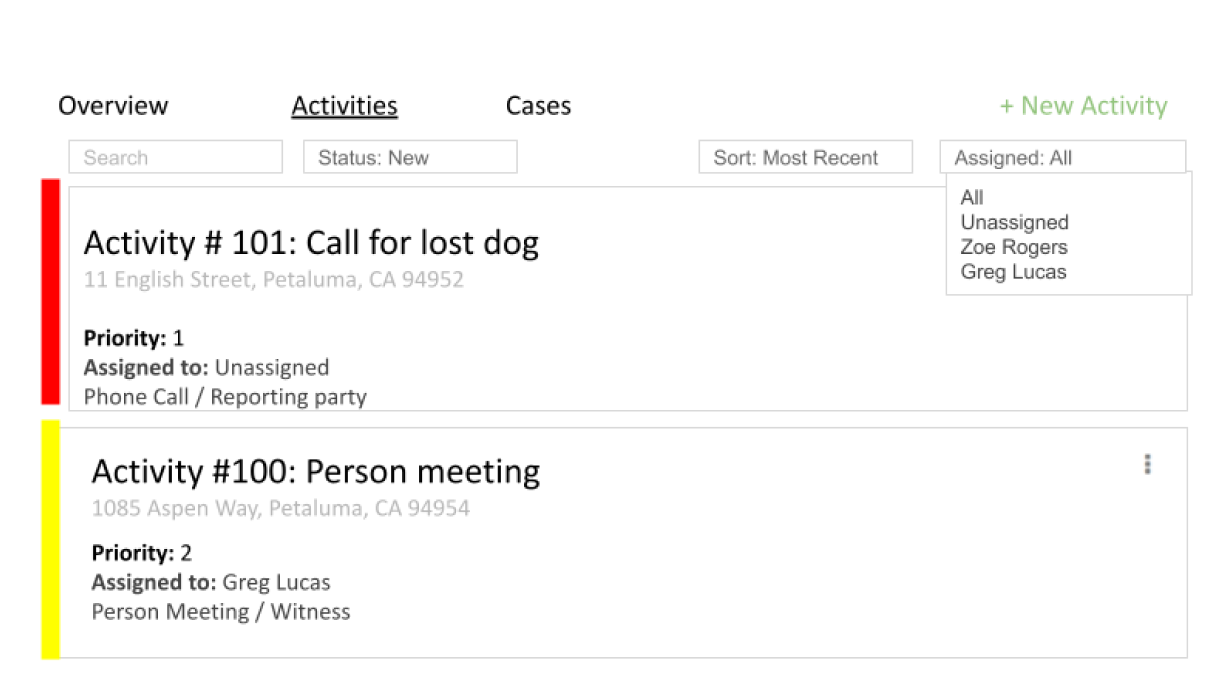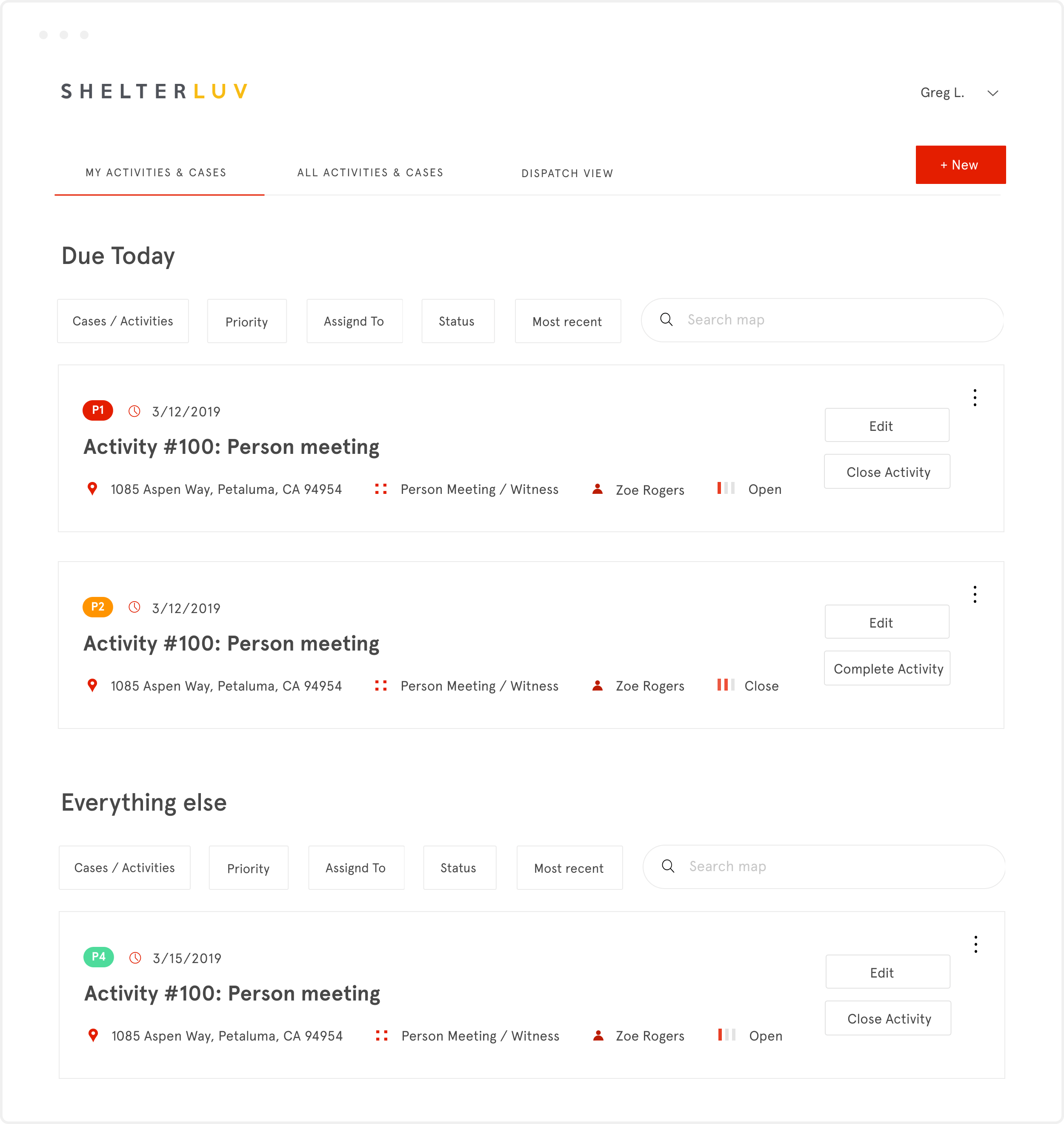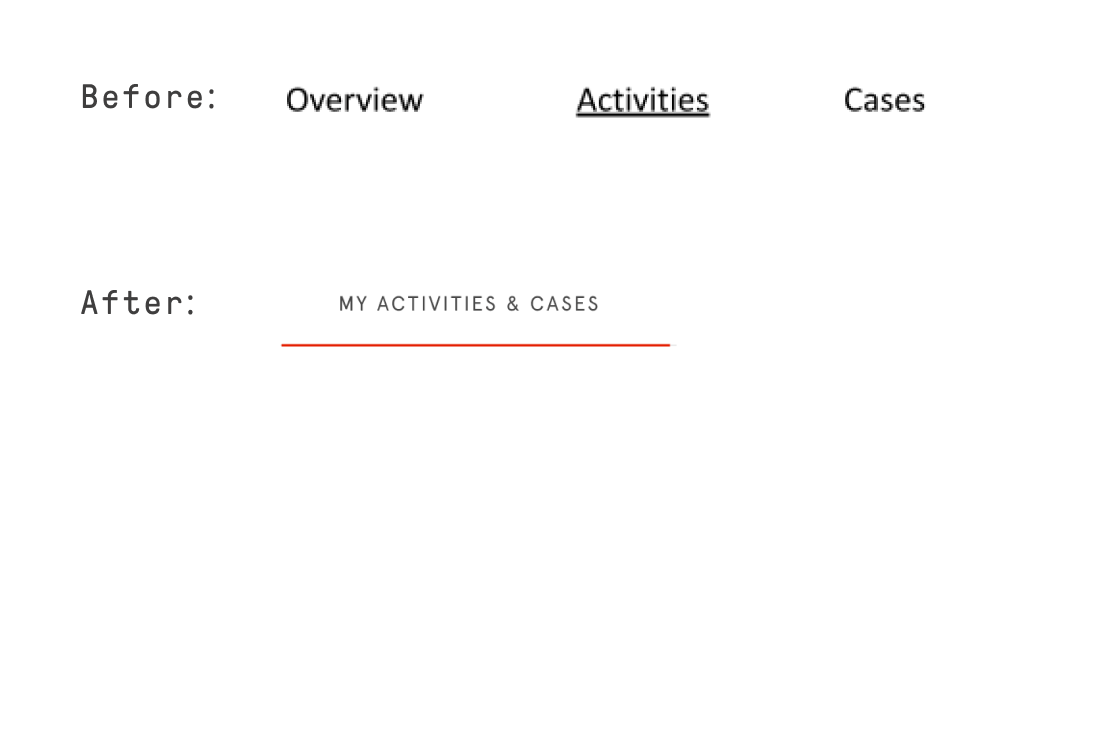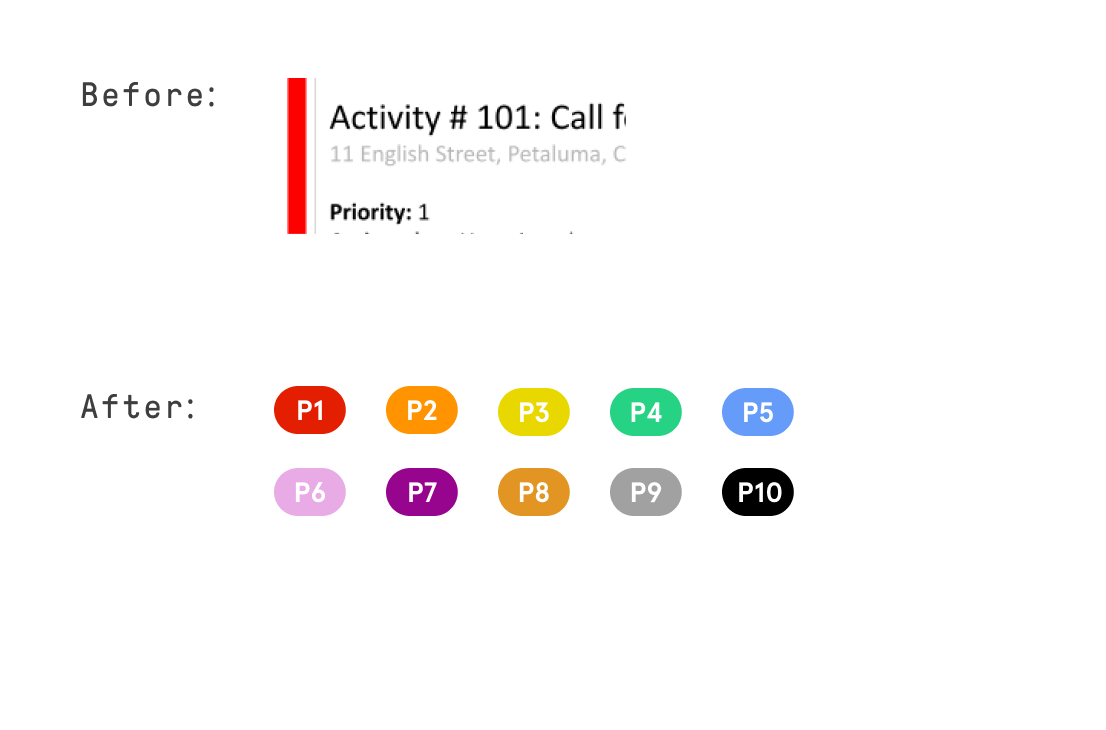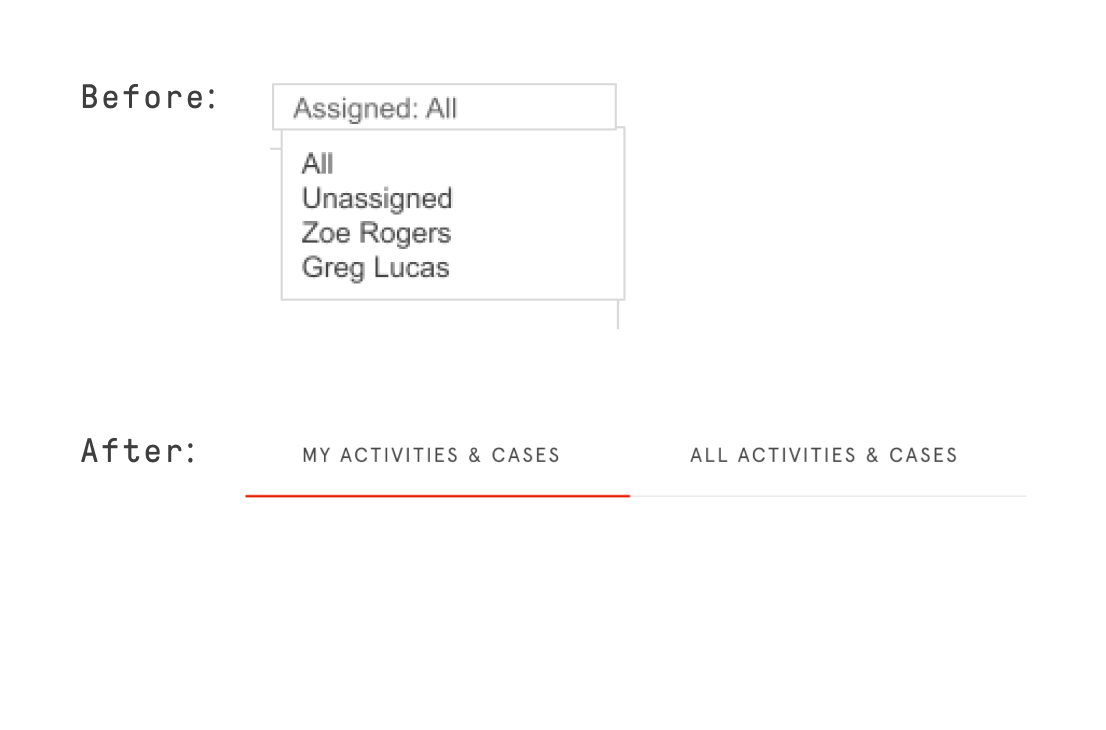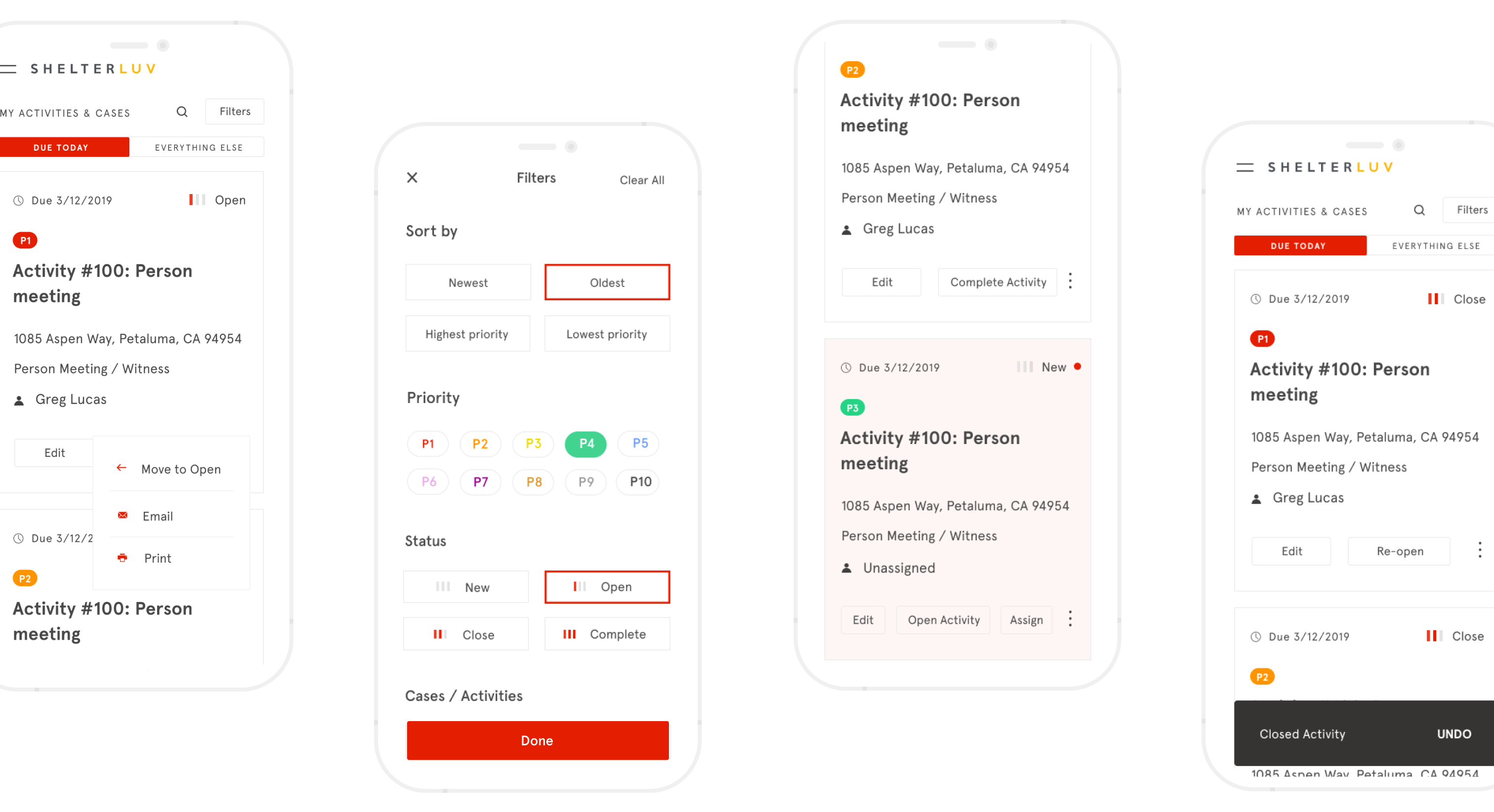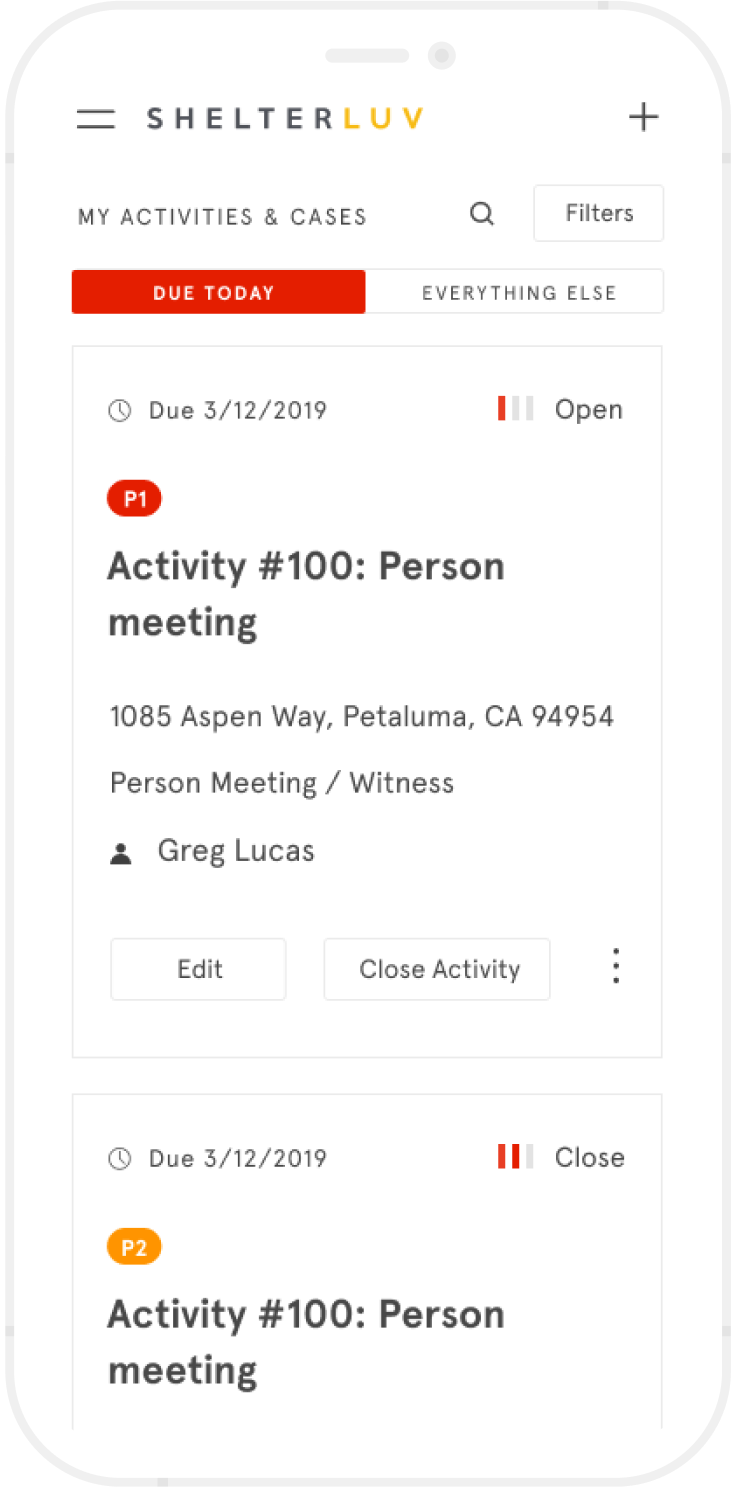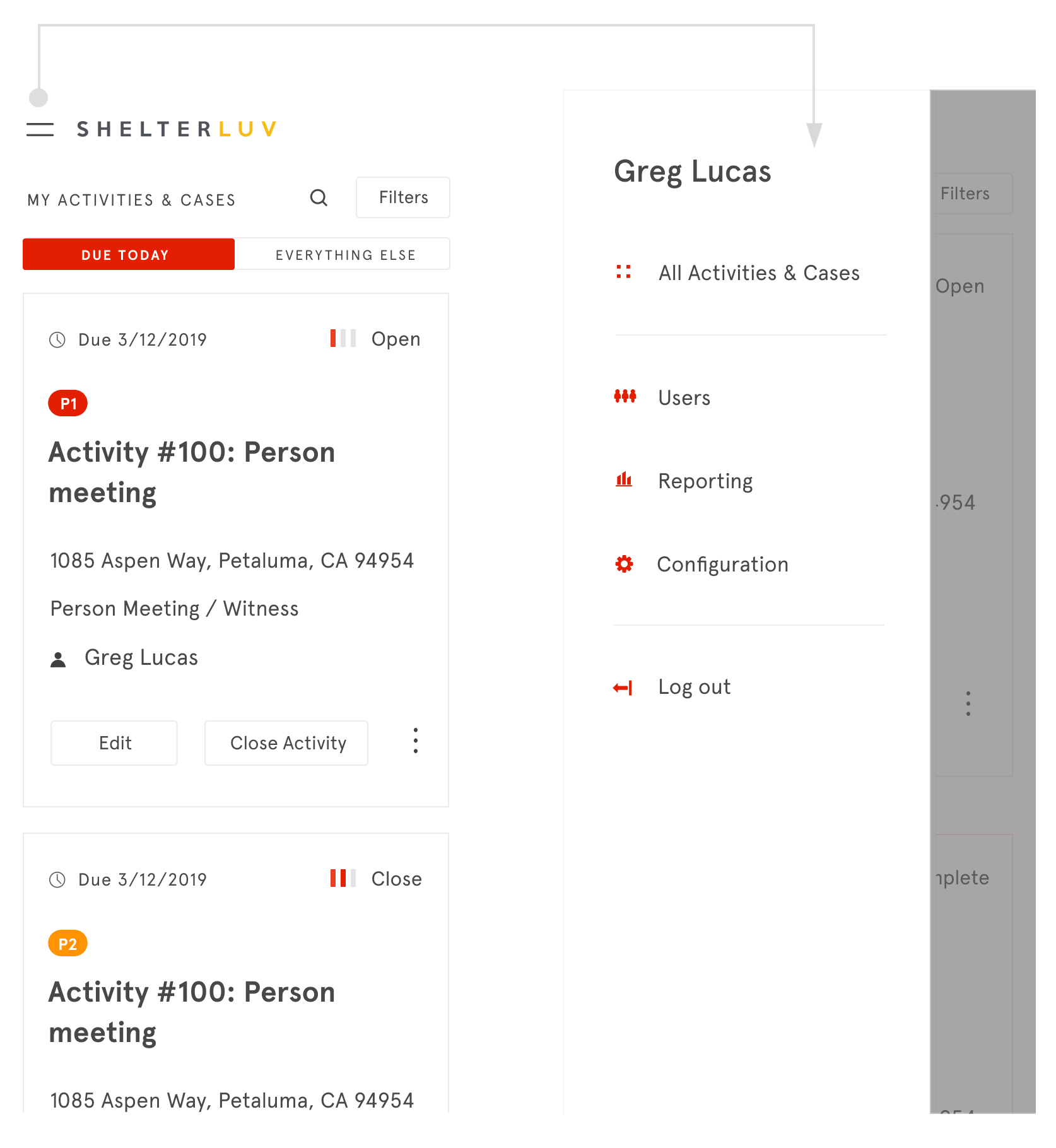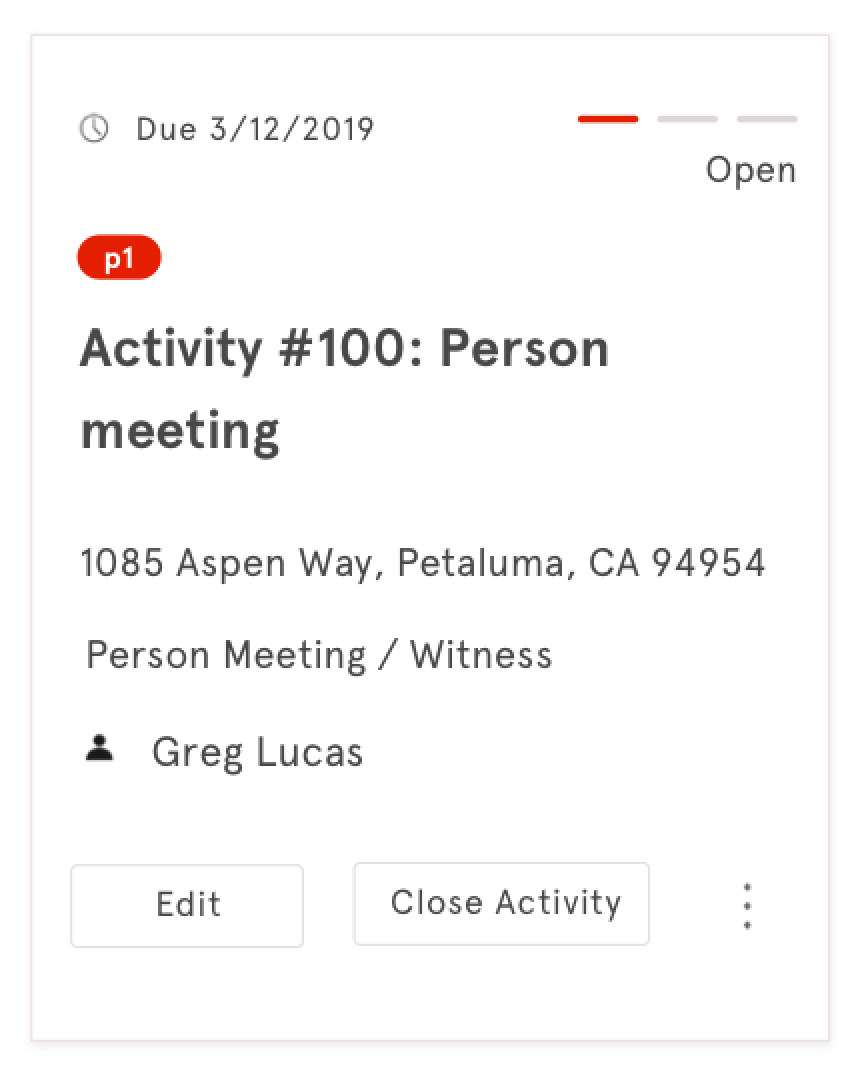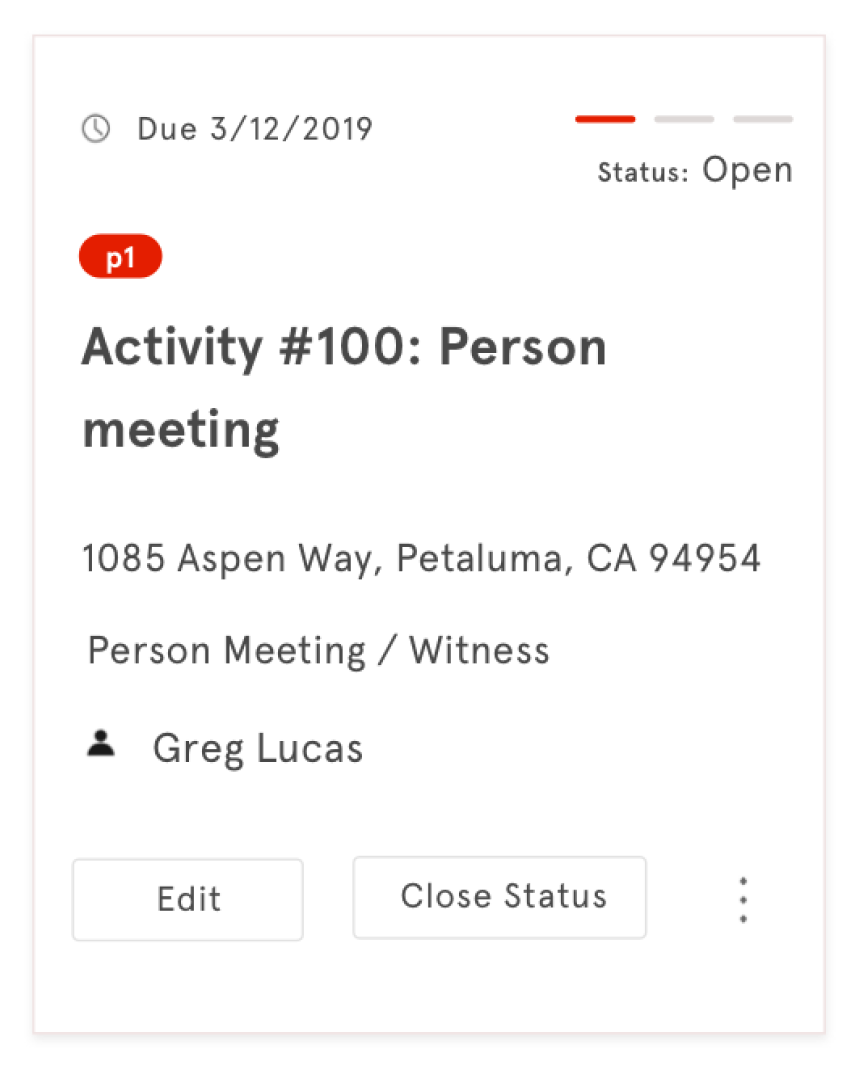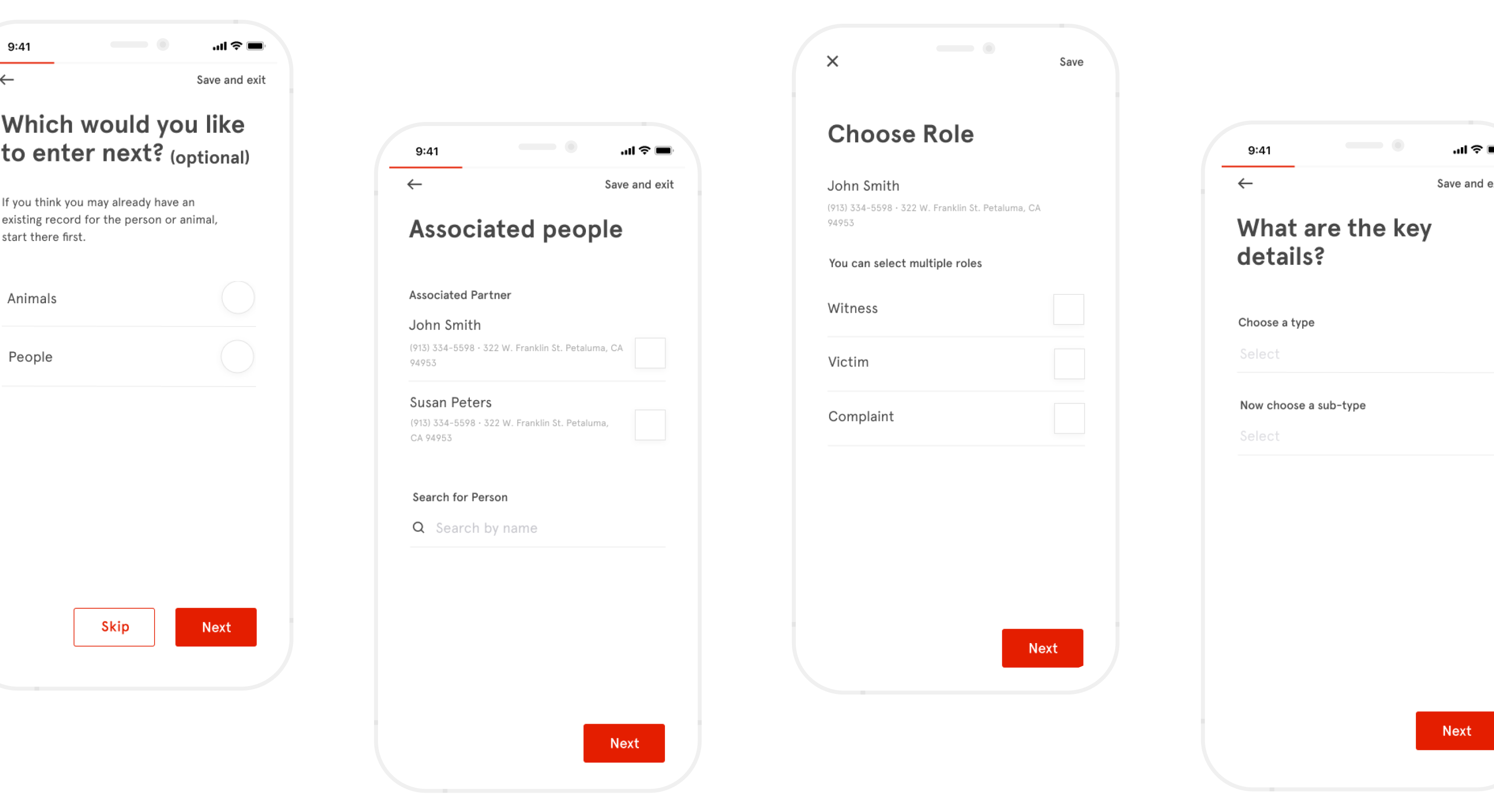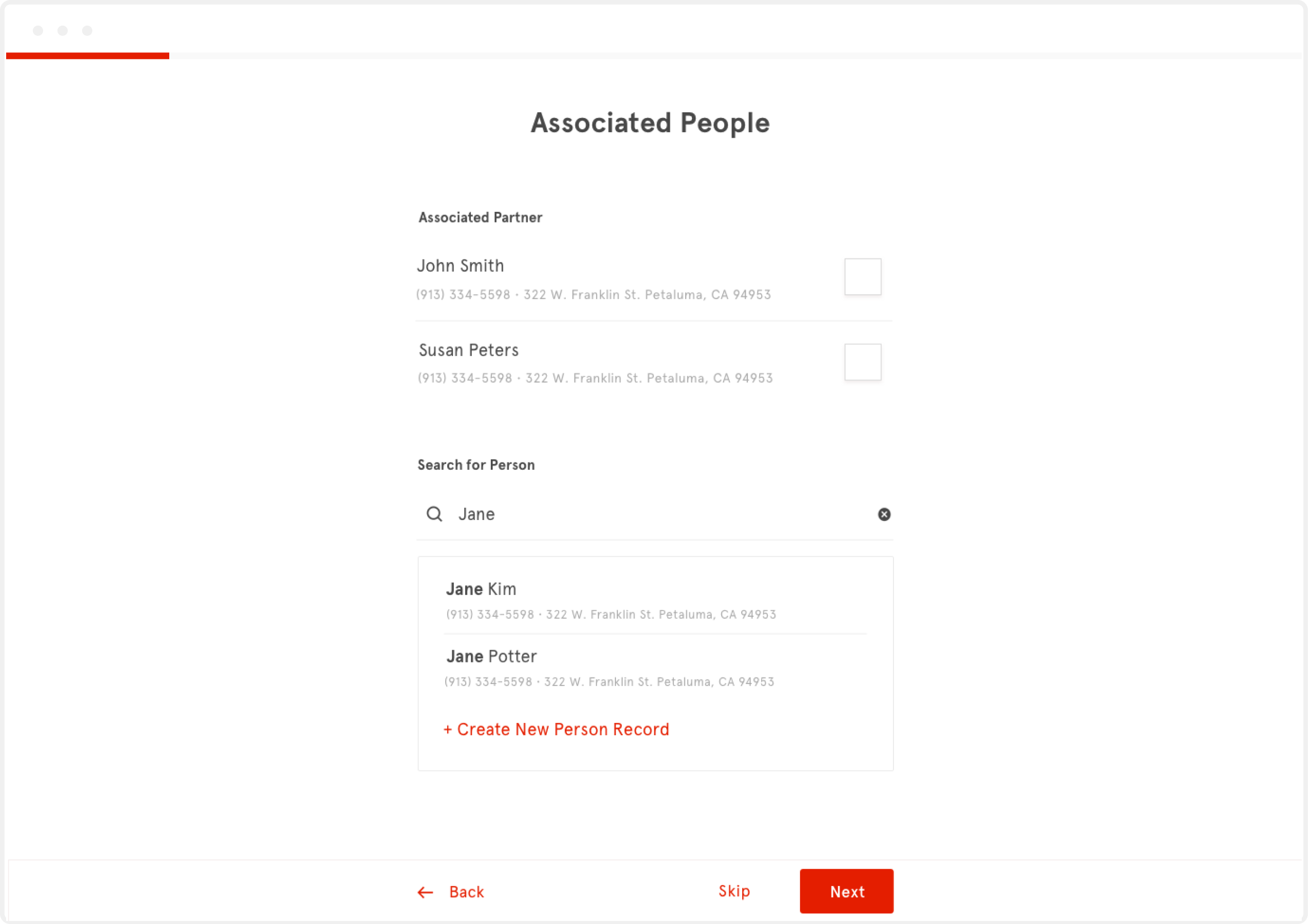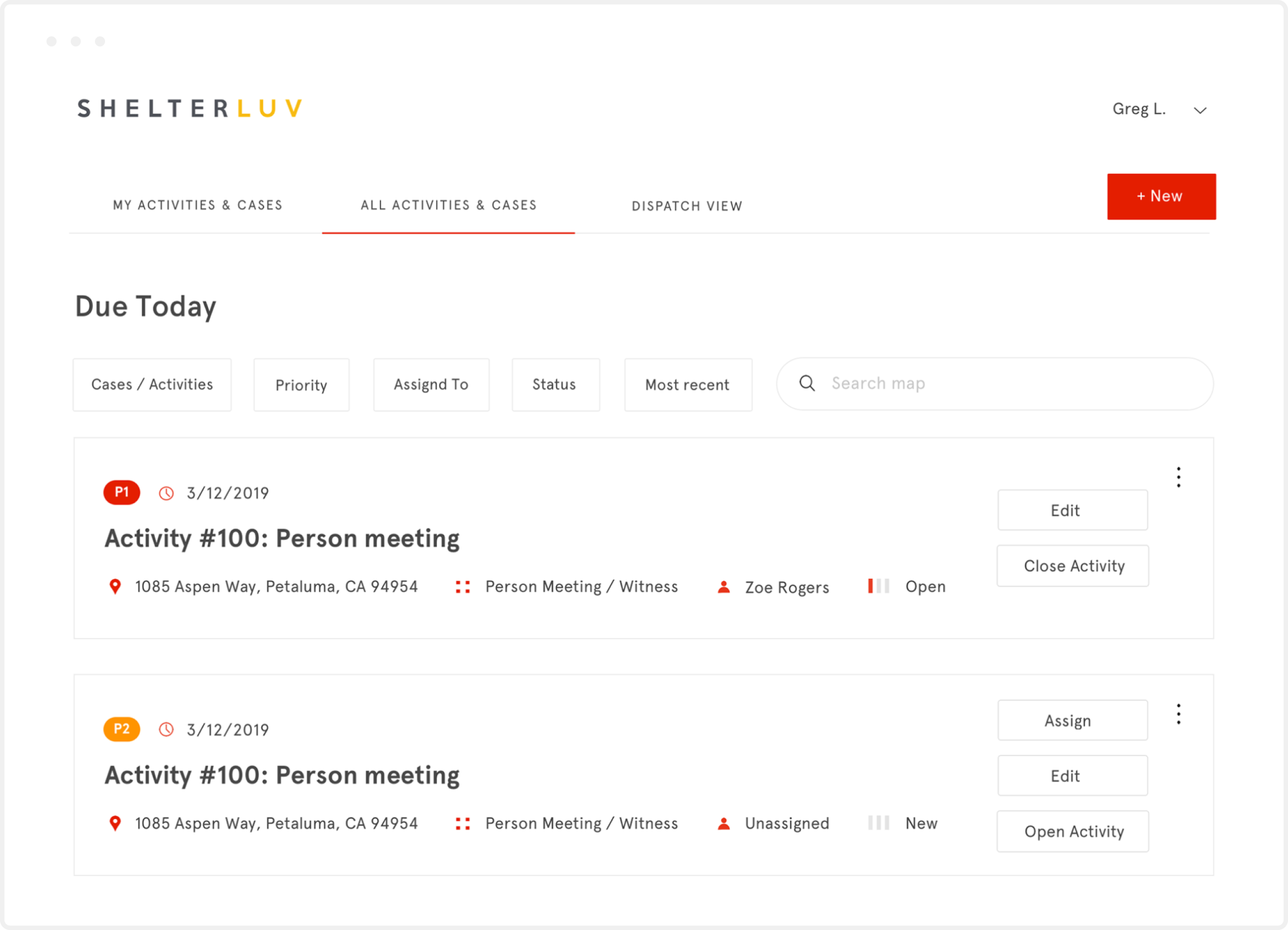
Web designs
In designing the web product, however, I noted that while an individual officer may well
want to review their workflow on the web, it’s also likely that the organization as a whole,
including dispatch officers who assign work, will want to review workflow at the
organization level. Keeping organizational needs in mind, I designed the web product so that users have easier access to All Activities & Cases.
In the mobile product, All Activities & Cases is in the hamburger menu and made less
prominent, though still accessible.
3. Lovin' Collaborating
I built on others’ ideas, which pushed me to create more creative solutions. For example, the PM liked the idea of putting the status information on top right of the card because of easy discoverability. I liked this direction too, and started exploring visualizing information so that it becomes even easier for users to register status information at a glance.
Status visualization prototypes
After prototyping, I came up with mini progress bar icons, which help create a coherent user experience because they go well with the other icons used in the web cards. Furthermore, these icons were not only received well by the users but also straightforward to implement from a technical standpoint.
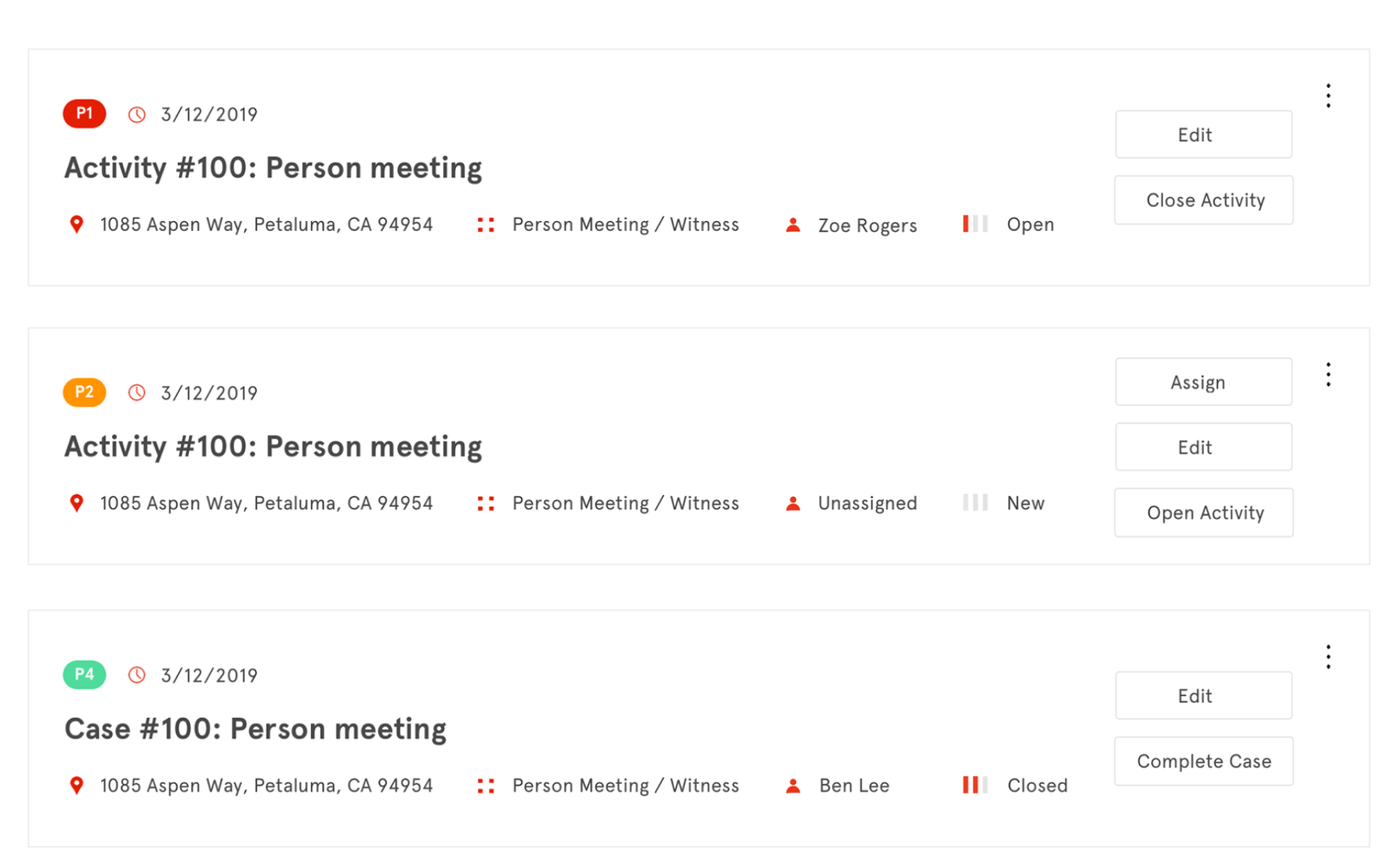
Status visualization final designs
4. Iterating, iterating...
a. Testing Designs Even When Not Ready
While we liked the idea of keeping things simple by not using column headers on cards, we
tested
prototypes with users to clear any doubts we had (in fact, I thought not
using labels for status might leave users confused).
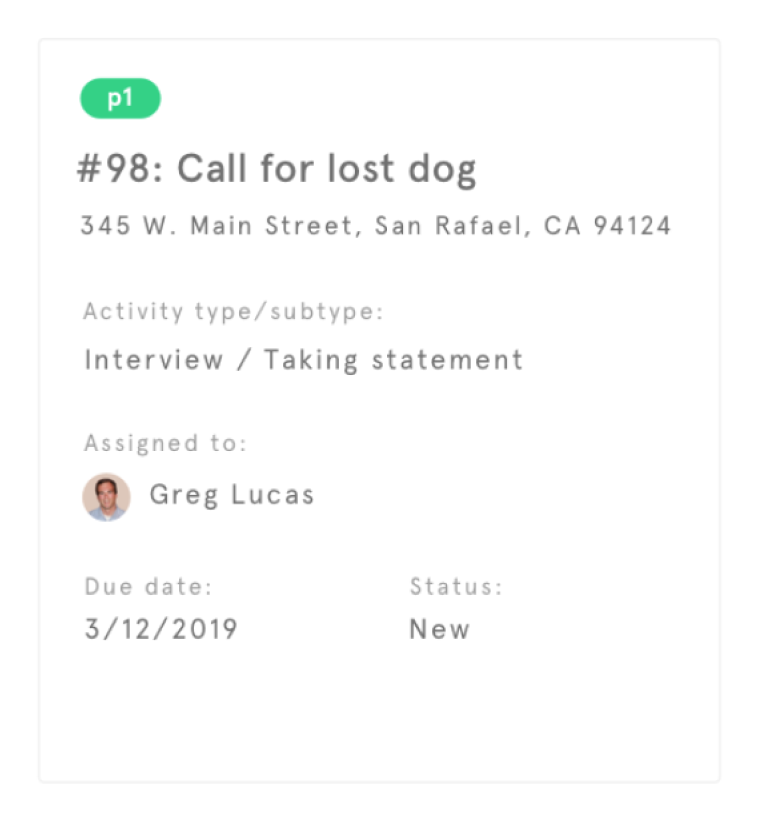
Column headers used on cards
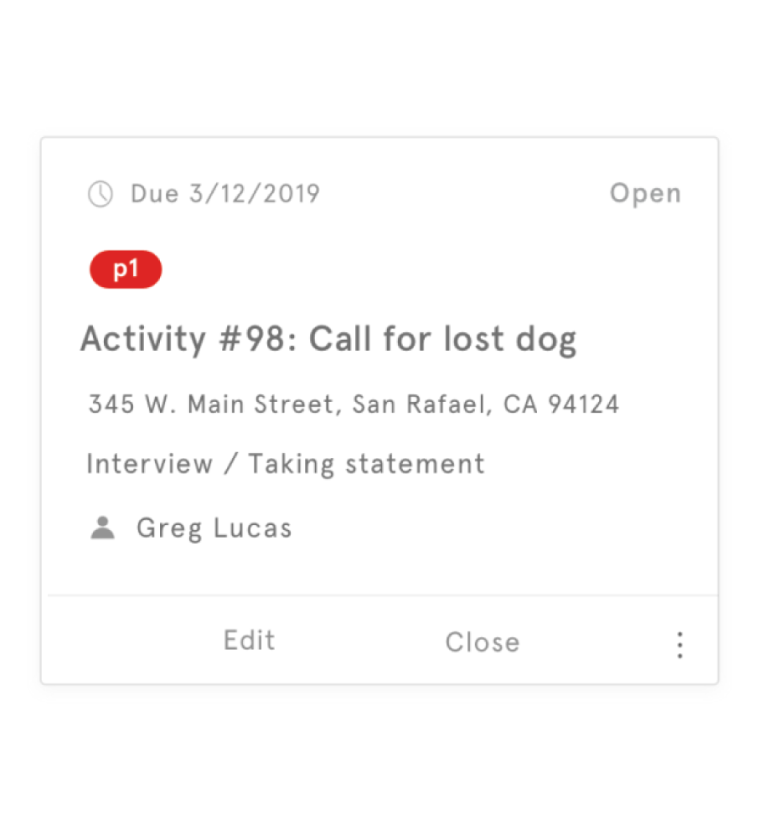
Column headers not used on cards
During this process, I took the initiative to test other things that we can test at this stage. For example, while we hadn’t worked on screens other than the homepage, I put together a clickable prototype that linked the homepage to rough prototypes of other key pages so that we could test whether users are able to accurately take key actions on the homepage. It’s better to fail early and course- correct than wait until you have full designs ready, so I felt that it was the right call to test additional features at that point.
b. Improving Usability
In other rounds of testing, we improved usability based on feedback. For example, we found that filters on the web had a usability issue and we moved the checkboxes to the left of selections so that it’s clearer to users what selections they’re making.
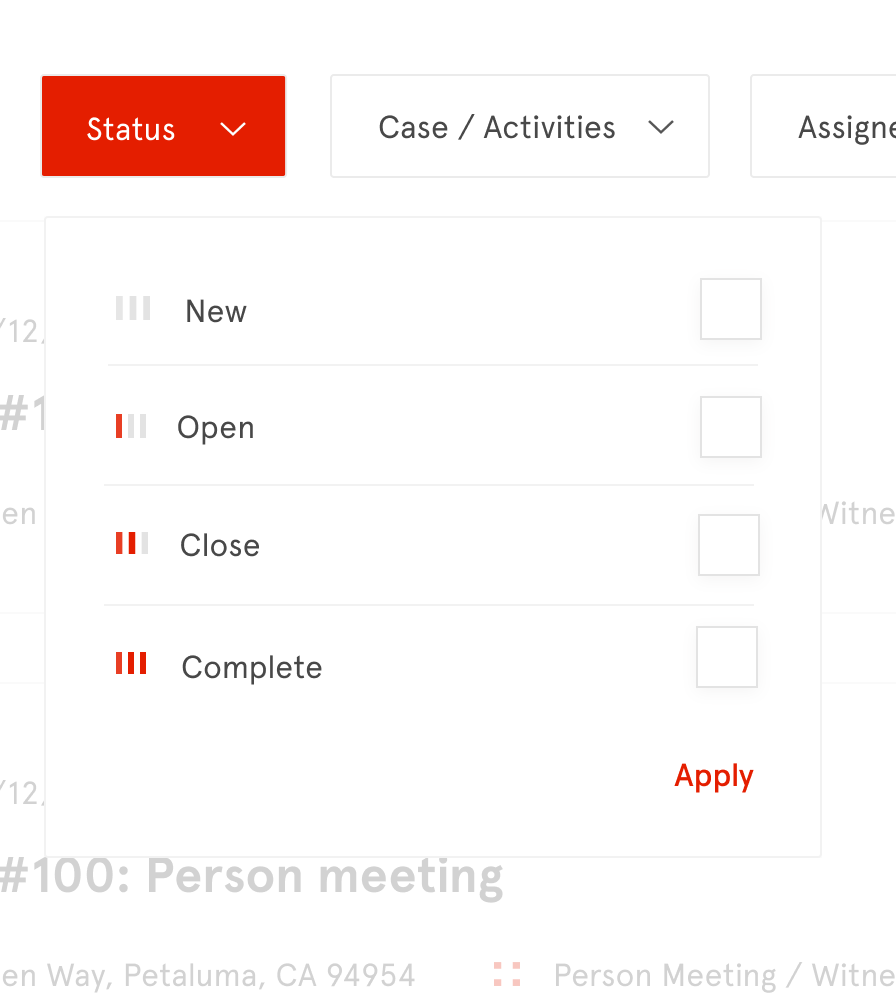
Before
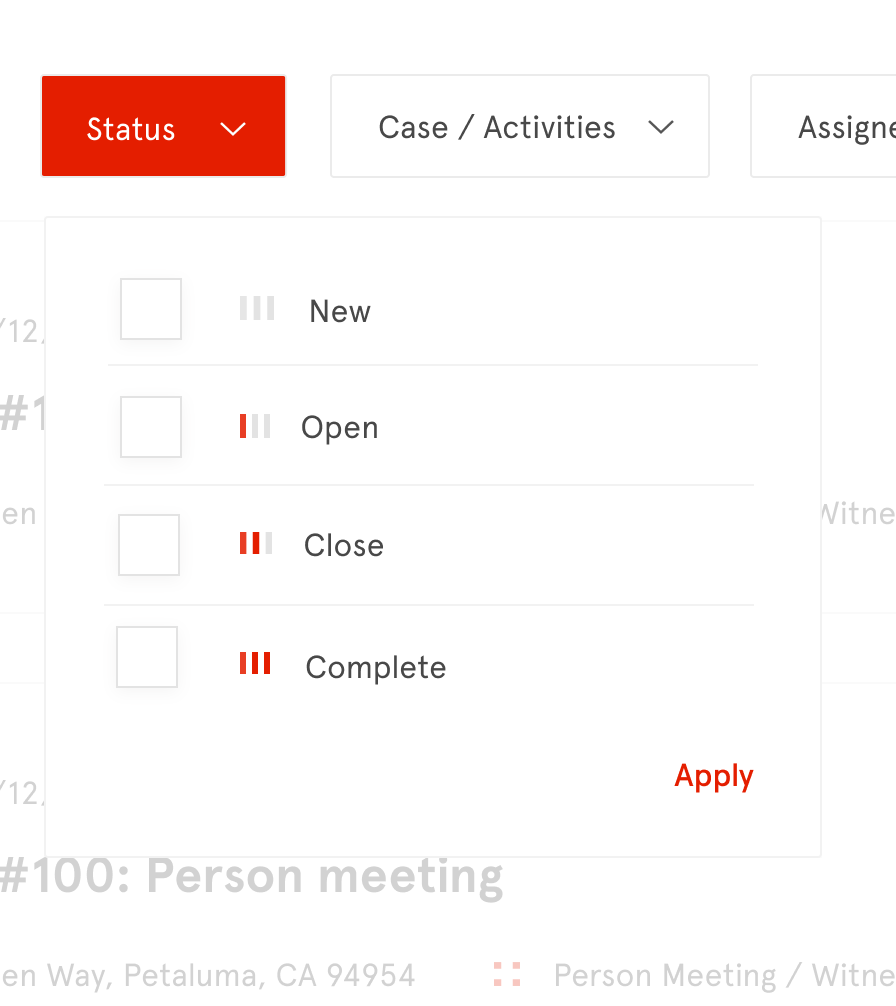
After
5. Leading the Design Process with UX Research Insights
I reviewed research on UX as I designed and shared UX research insights with the team in order to effectively guide the design process. For example, the form wireframes that the team originally created had usability issues. To quickly get buy-in, I shared key research insights with the team.
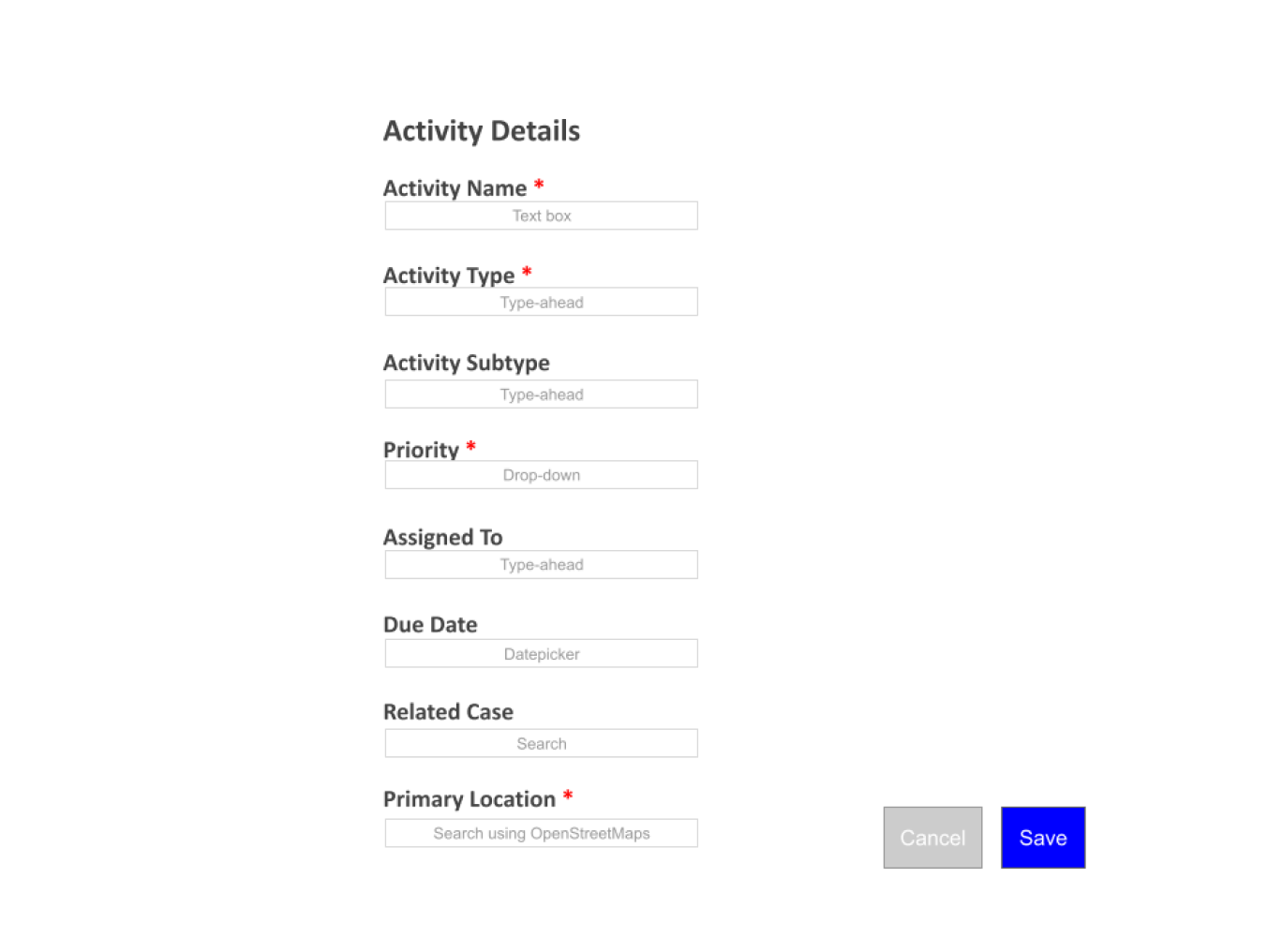
Form wireframe had usability issues
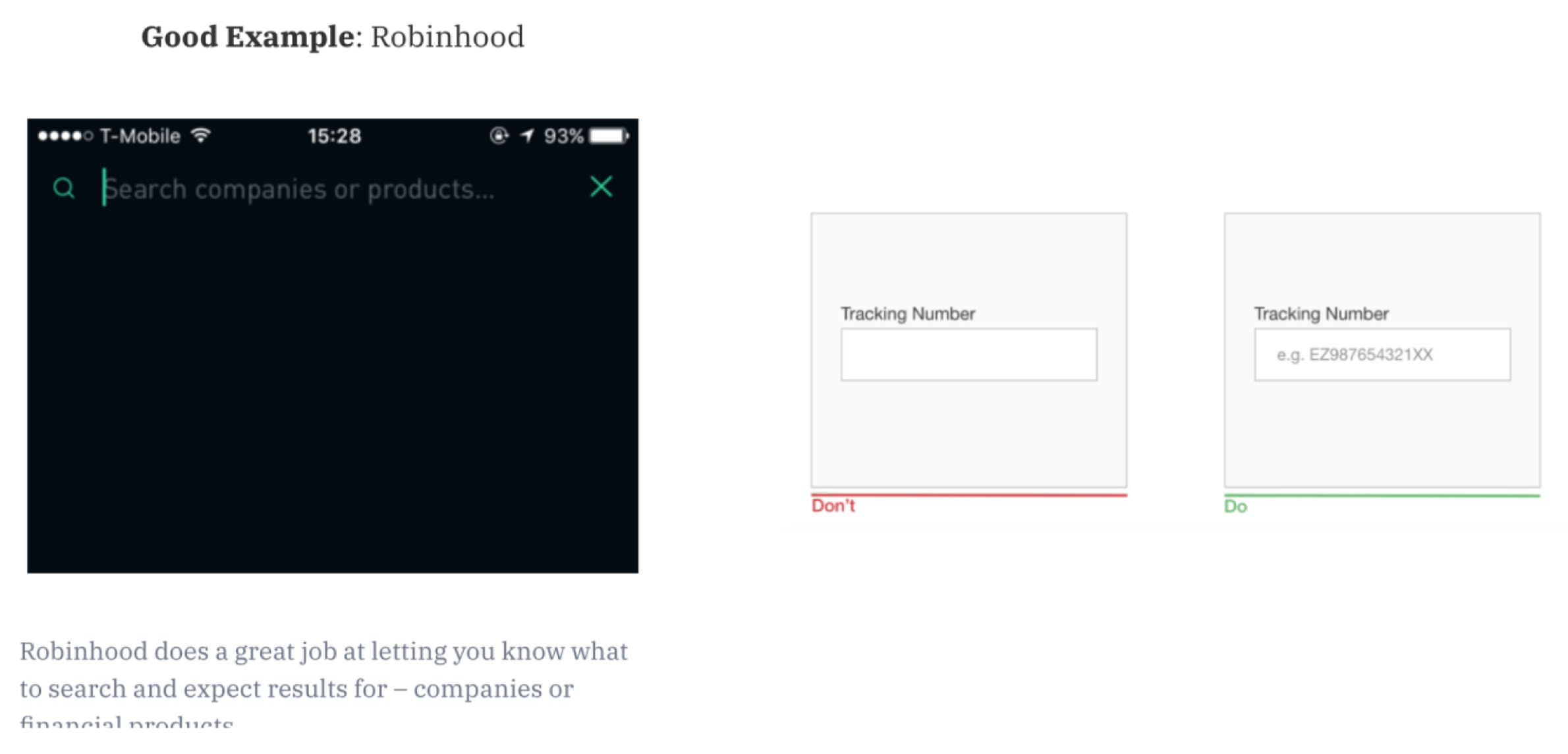
Some of the UX research insights I shared with the team

